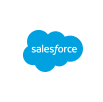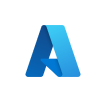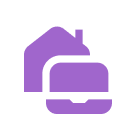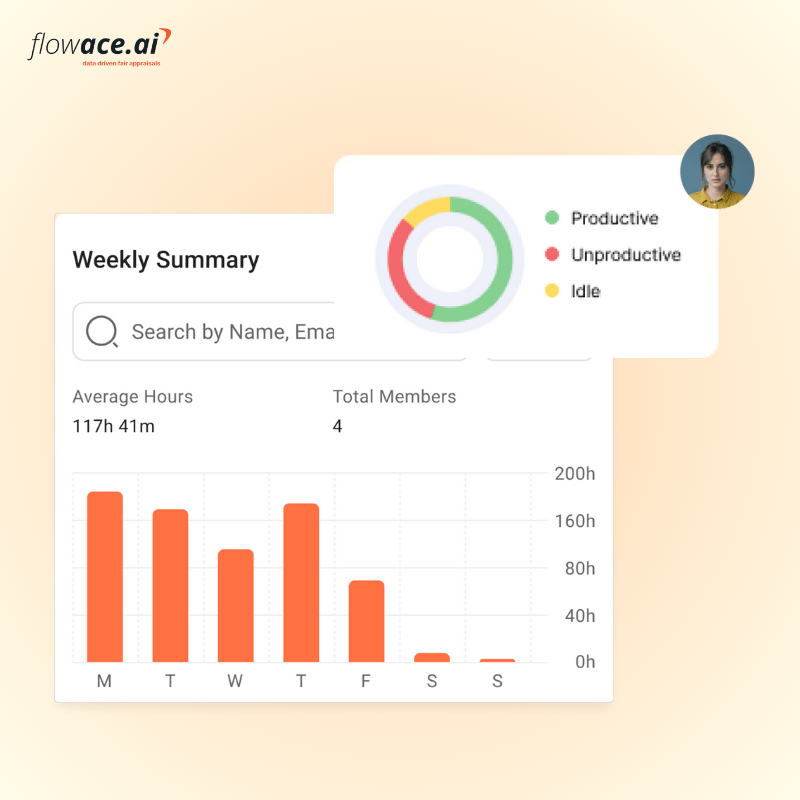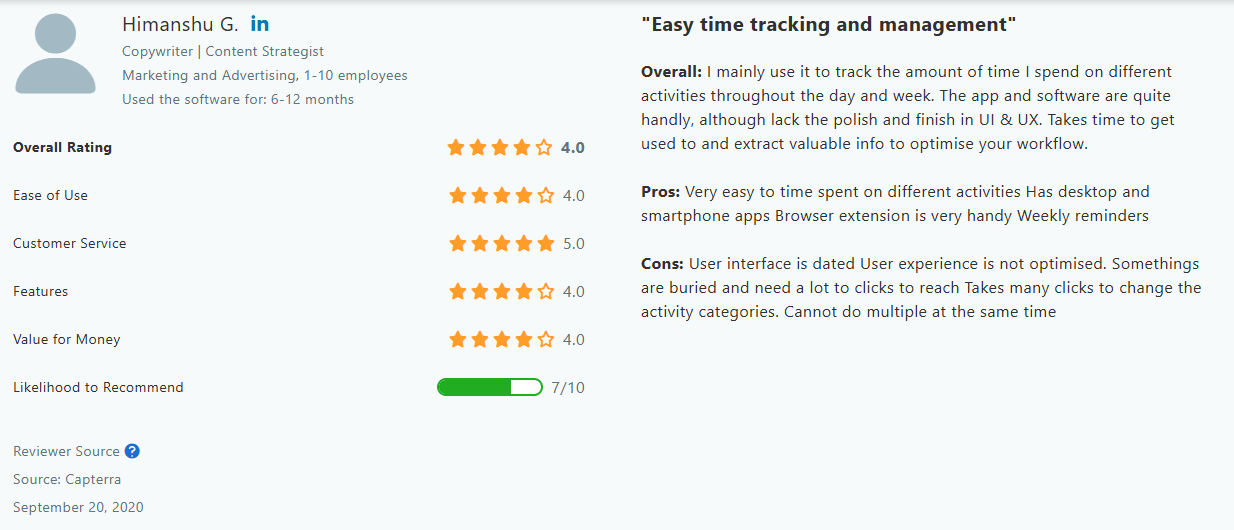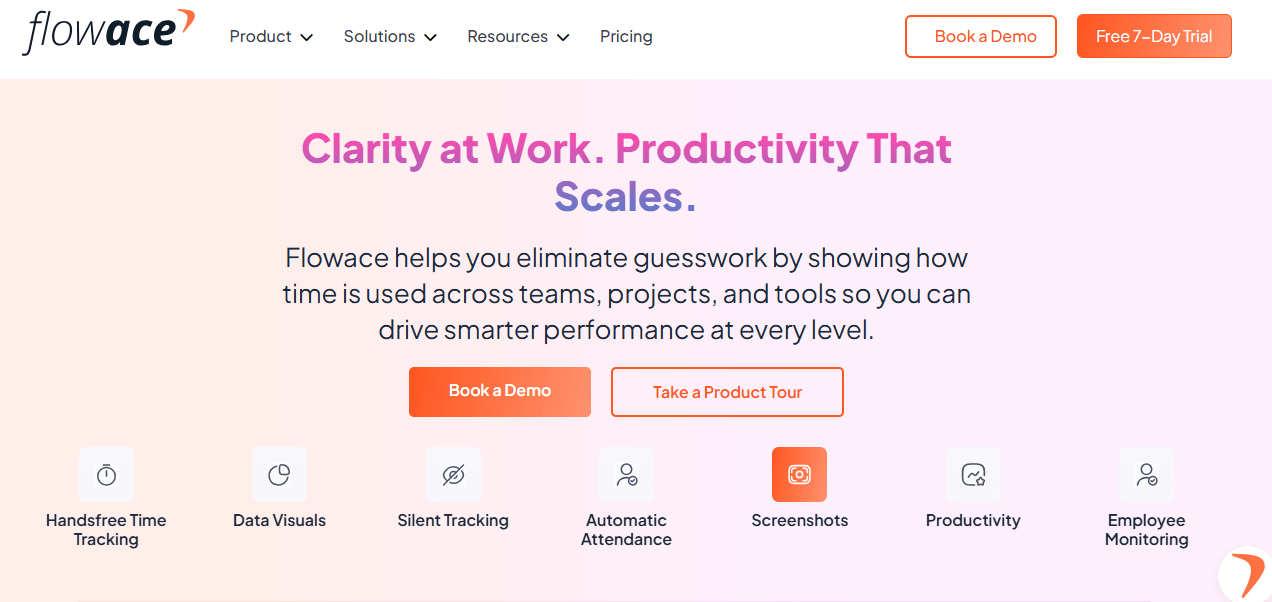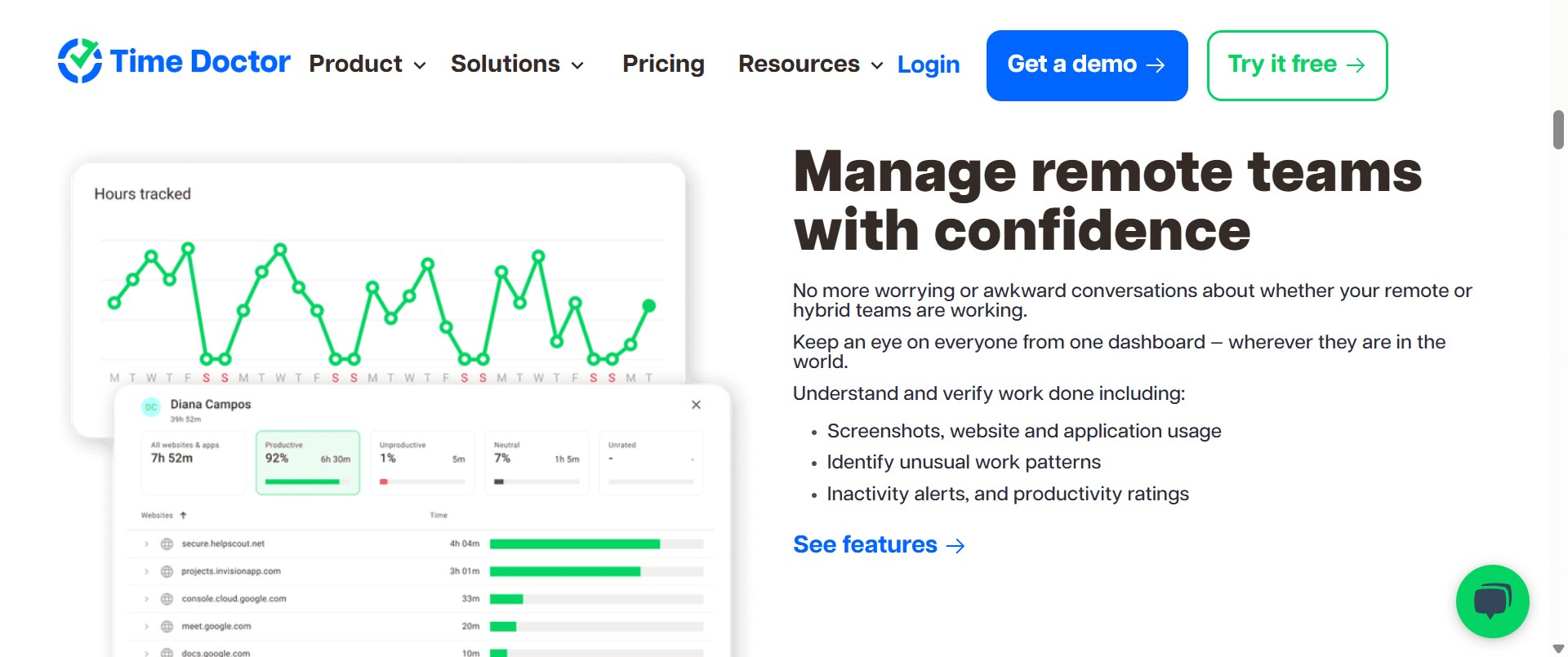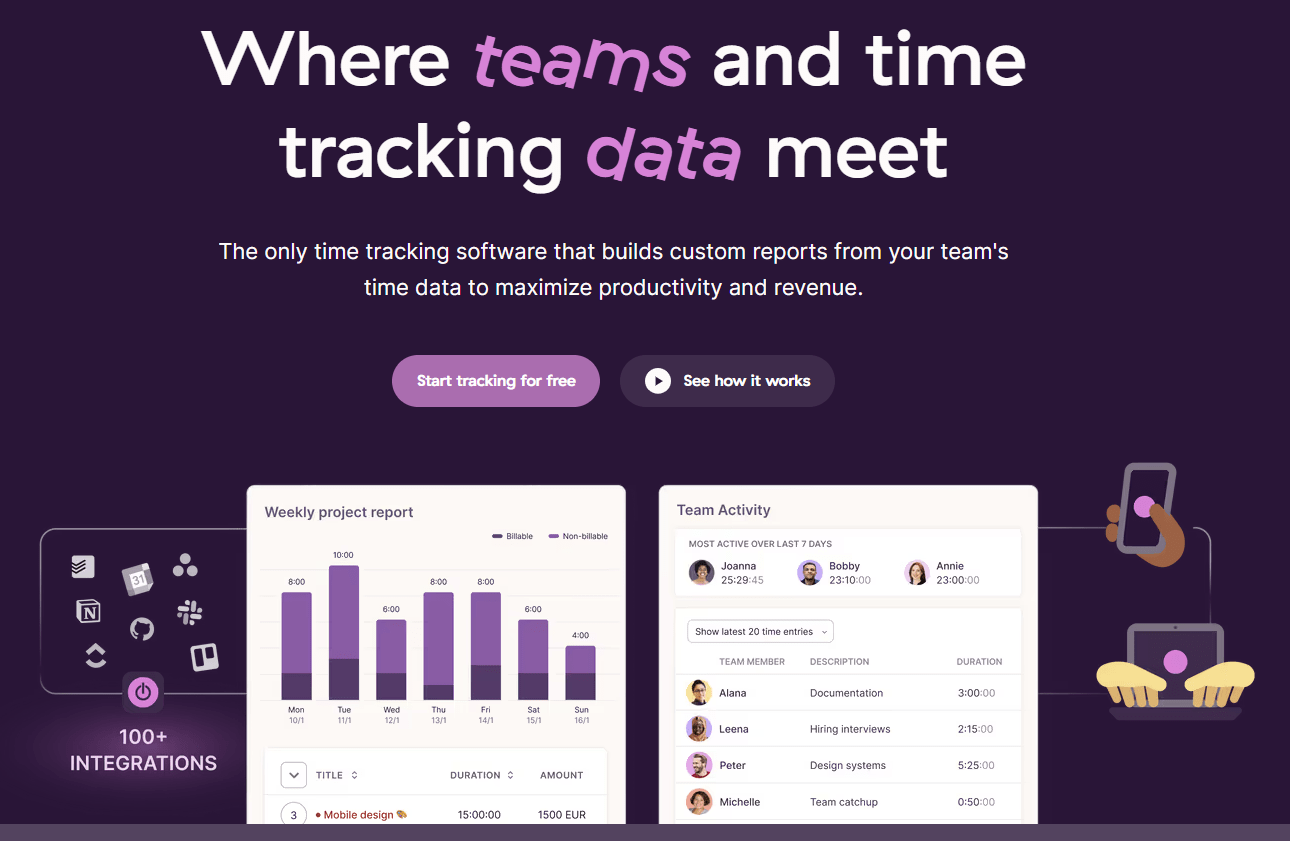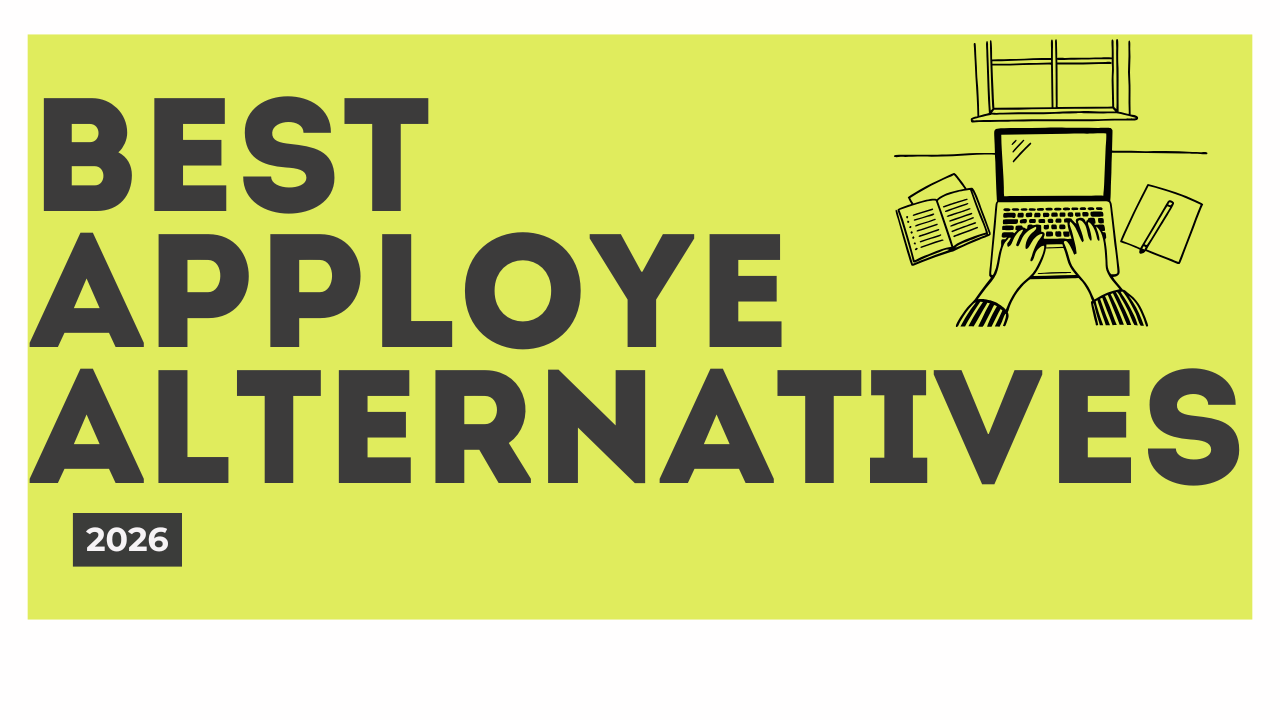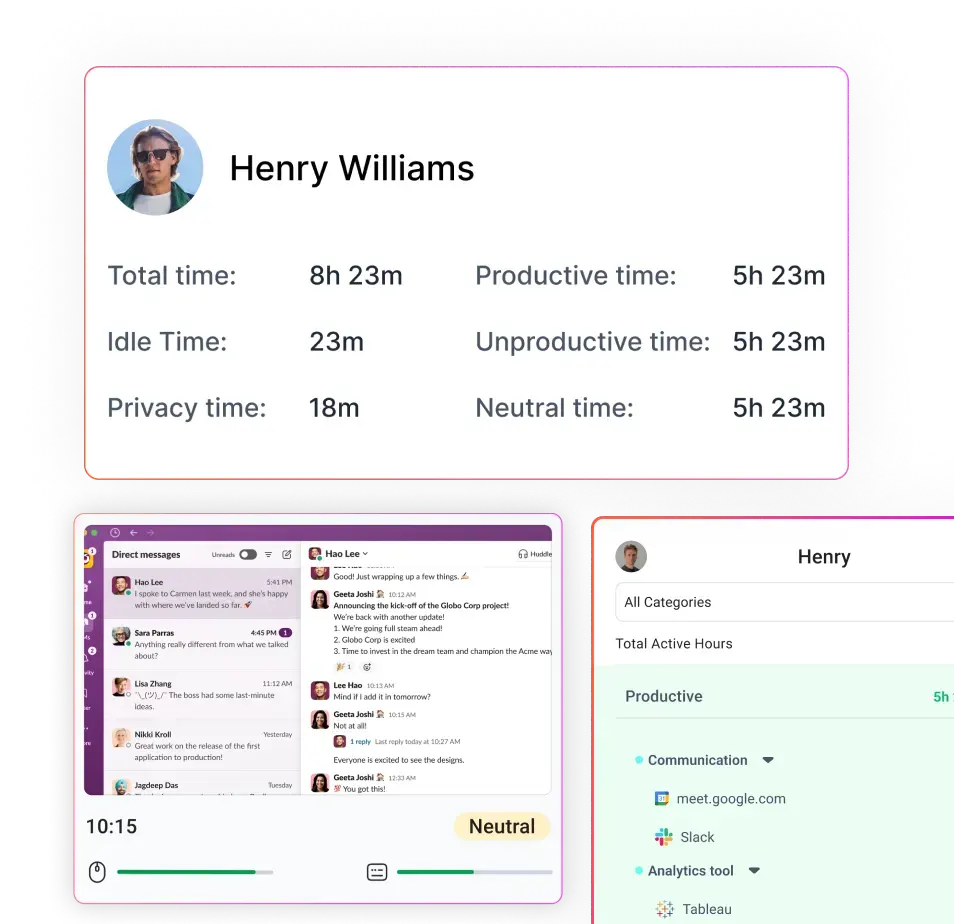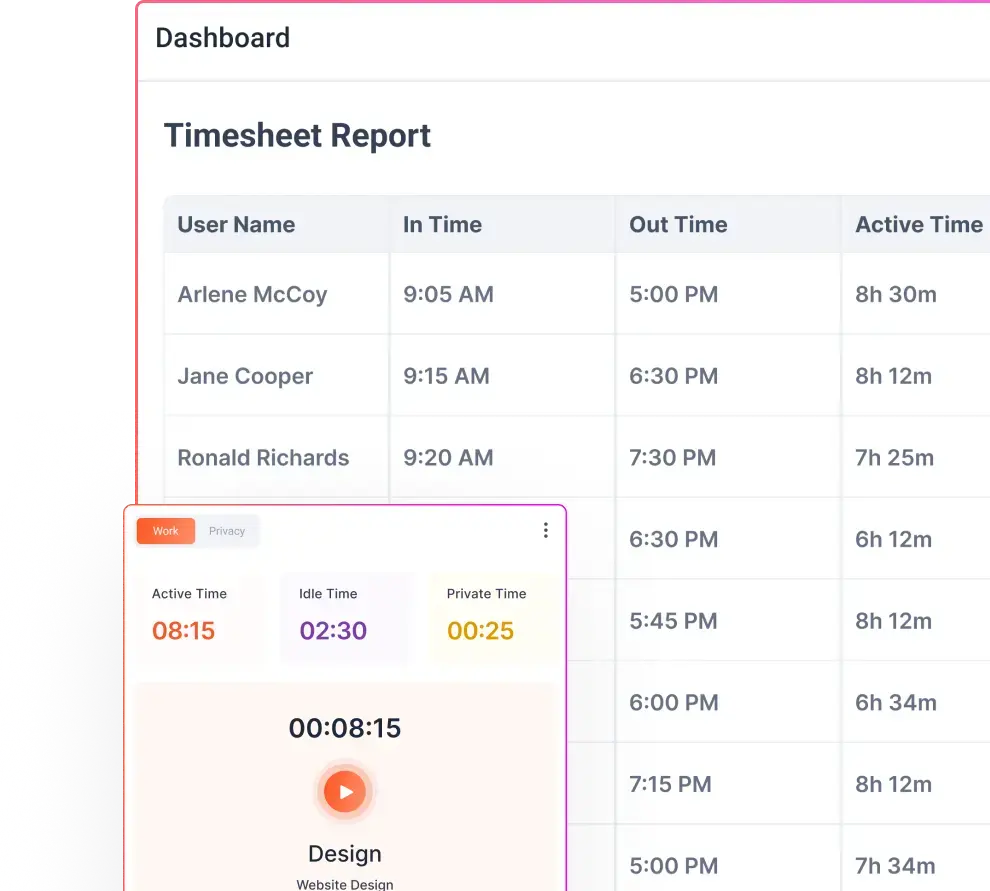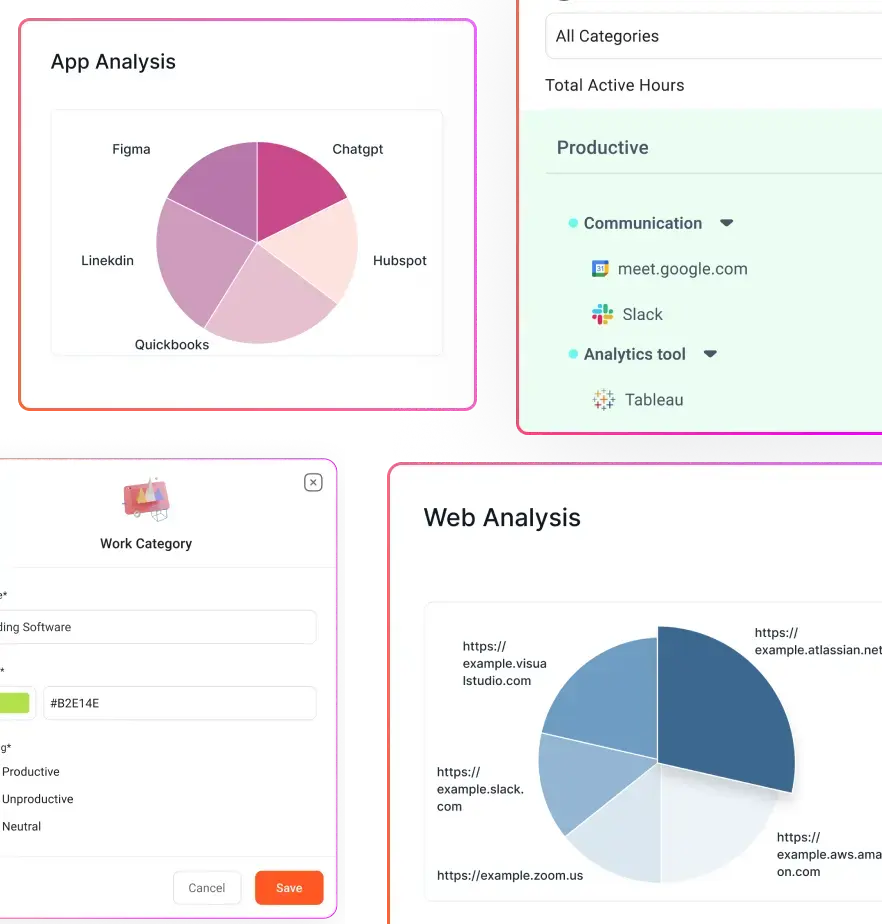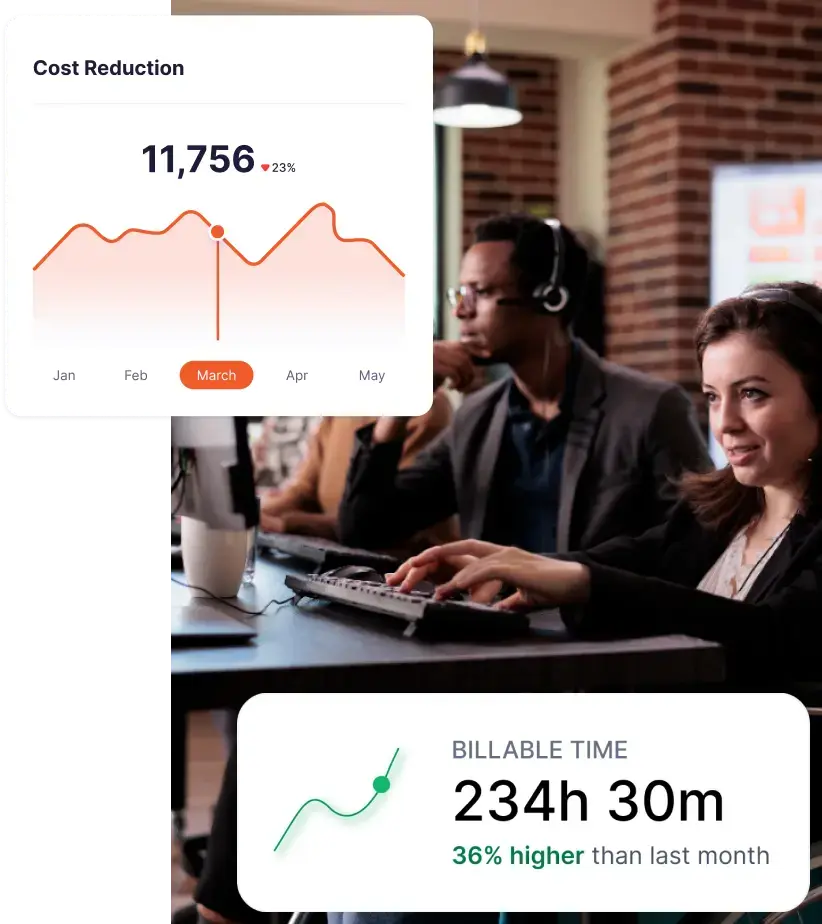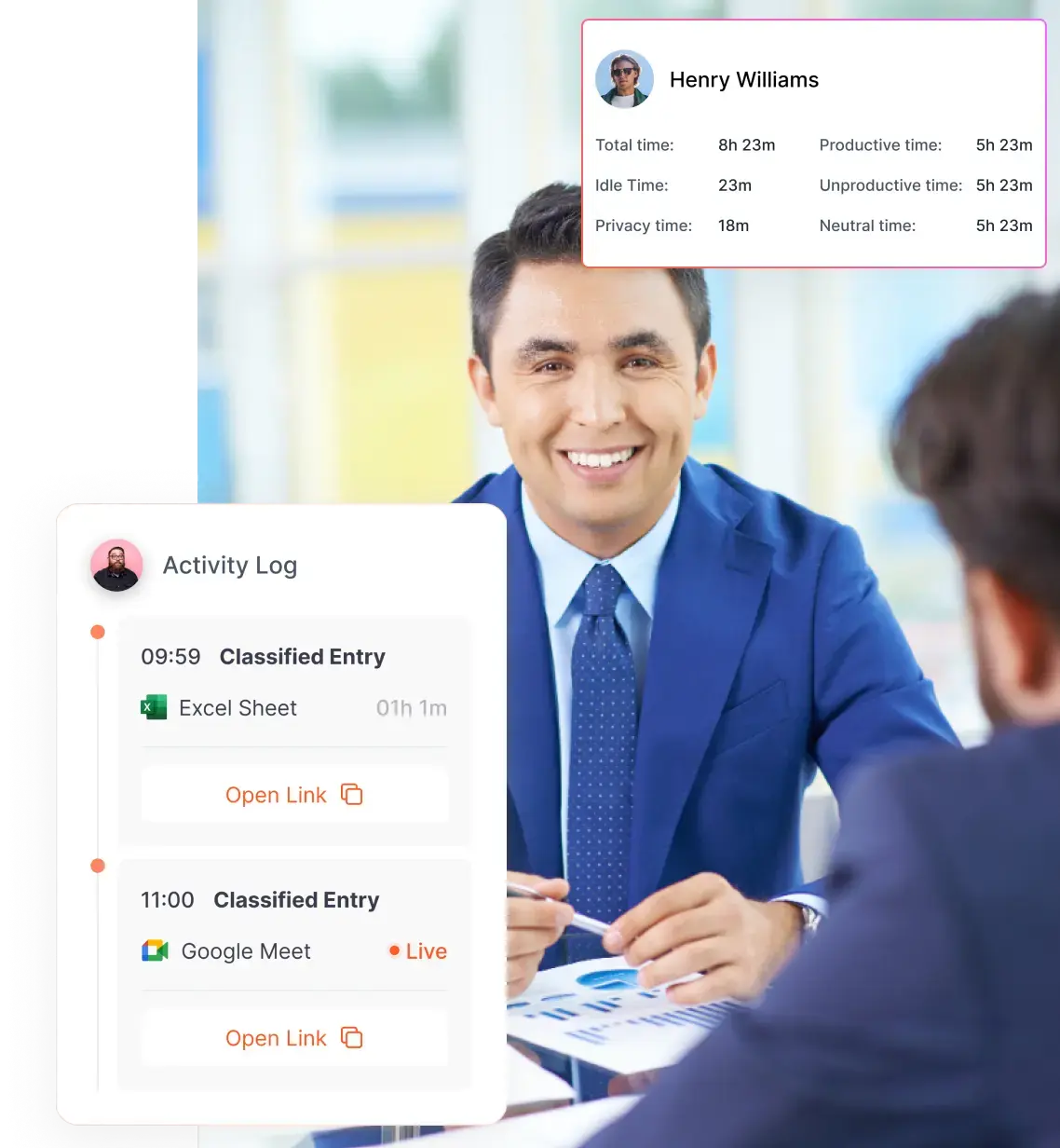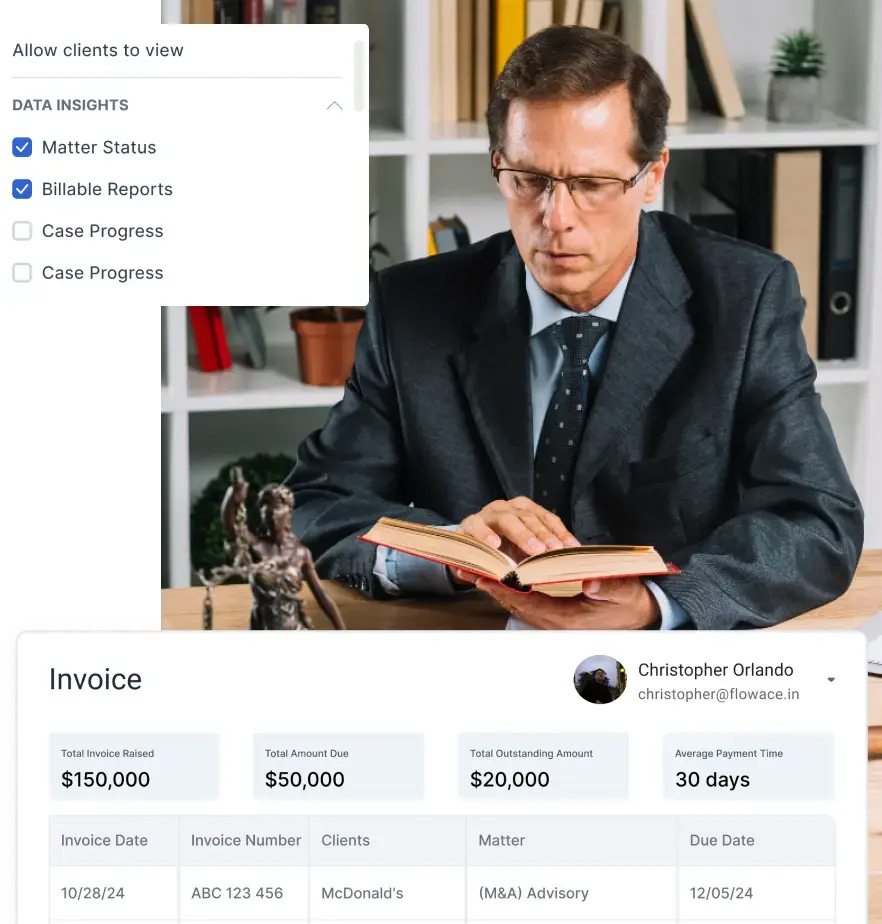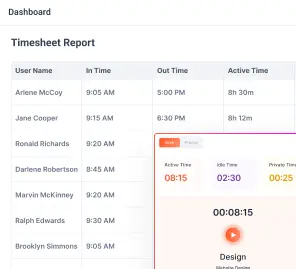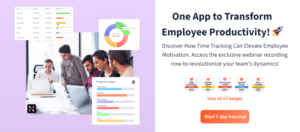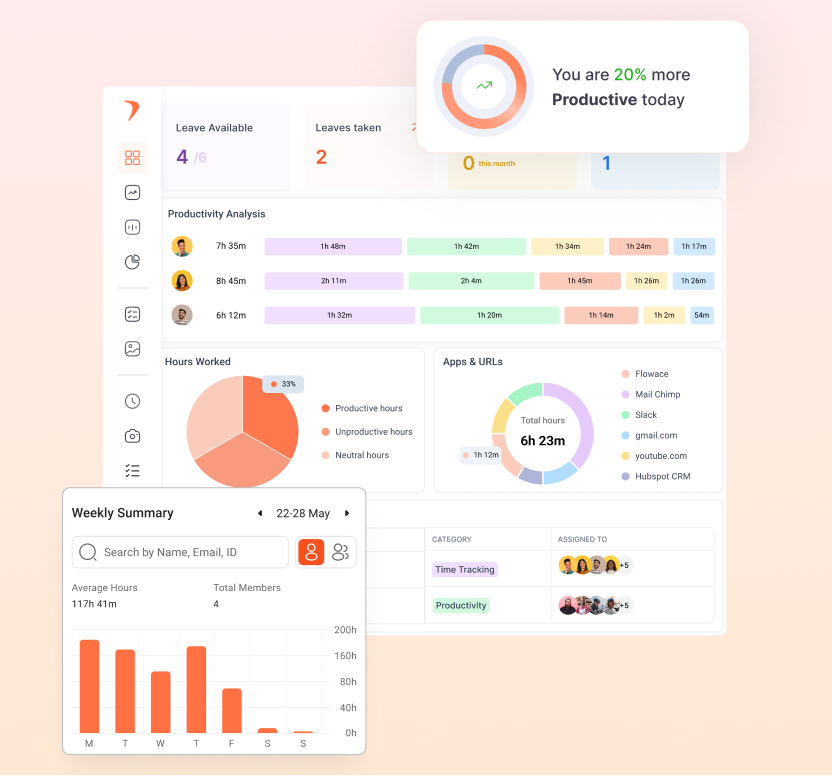If you’re searching for RescueTime alternatives, you’re likely looking for a more customizable, feature-rich, or cost-effective time tracking and productivity solution. While RescueTime is a popular tool for automatic tracking and distraction management, it lacks manual time entry, advanced reporting, and workforce-level insights, making it less ideal for businesses that need comprehensive productivity monitoring.
In this guide, we’ll explore 8 top RescueTime alternatives, breaking down their features, pros, cons, reviews, pricing, and use cases to help you make an informed decision.
Key Takeaways:
- RescueTime is limited for business use. It lacks manual time entry, advanced reporting, invoicing, and team-level insights, making it less ideal for businesses, agencies, and consultants.
- Flowace is the best overall alternative. With AI-powered analytics, manual + automatic tracking, project/task management, and budget-friendly pricing, Flowace outperforms RescueTime for teams and enterprises.
- Flowace: All-in-one AI tracking for teams
Time Doctor: Best for employee monitoring & distraction control
TimeCamp: Best budget-friendly tool with invoicing - Hubstaff: Best for GPS tracking and remote workforce
Toggl Track: Best for simplicity and solo professionals
ActivTrak: Best for behavioral analytics and engagement insights
Clockify: Best free tool for small teams and freelancers
Everhour: Best for project-based time tracking and billing
What is Rescuetime?
RescueTime is a time tracking and productivity management software designed primarily for individuals and professionals looking to improve focus and eliminate distractions in their daily digital workflows.
Launched in 2007, RescueTime pioneered automatic time tracking by running in the background and monitoring how users interact with applications, websites, and digital tools. Its goal is to provide insights into how time is spent on a computer or mobile device, without requiring manual input.
At its core, RescueTime categorizes websites and apps into “productive” or “distracting” based on user-defined goals and industry standards. For example, using Slack or Google Docs might be labeled as productive time, while time spent on YouTube or Facebook could be flagged as distractions (unless customized otherwise).
It automatically tracks time spent on each activity and generates daily and weekly reports that help users assess their digital behavior and focus trends. Additionally, RescueTime offers focus tools like “Focus Sessions,” which block distracting websites for a set period to help users stay in deep work mode.
Pros and Cons of Using RescueTime
Pros
1. Automatic Time Tracking with Zero Input
RescueTime excels at passively tracking time. Once installed, it runs quietly in the background and records app and website usage without needing any manual action. This is a huge advantage for users who want a frictionless way to gather accurate data on how they spend their day, particularly those who find manual time tracking tedious or prone to error.
2. Focus Sessions and Distraction Blocking
A unique standout feature is Focus Sessions, a tool that allows users to block distracting websites for a set period. This is especially useful for remote workers or freelancers struggling with attention drift. These sessions help cultivate deep work habits and improve concentration during peak productivity hours.
3. Detailed Productivity Reports
RescueTime provides daily, weekly, and monthly reports that show how much time was spent productively, neutrally, or unproductively. These visual reports help users reflect on trends over time and adjust habits accordingly. For personal productivity analysis, the platform delivers solid, easy-to-read insights.
4. Goal Setting and Alerts
Users can set goals like “spend less than 1 hour per day on social media” or “do 4 hours of productive work daily.” RescueTime will alert users in real-time if they’re going off track. These proactive nudges are great for those building time management discipline and wanting to stay accountable throughout the day.
5. Minimal Setup and User-Friendly Design
Unlike some time trackers that require extensive configuration, RescueTime is quick to set up. Most of its categorization and productivity scoring is automated, and users can customize categories as needed. Its clean dashboard and intuitive user interface make it accessible even to non-tech-savvy users.
Cons
1. Limited advanced features
RescueTime lacks certain management tools needed for teams, such as advanced reporting, scheduling calendars, geolocation, payroll integrations, and in-depth team monitoring. This limits its use for organizations versus individuals
2. Limited Team Functionality
RescueTime is not designed for team use. It lacks features such as employee timesheets, productivity comparisons between team members, centralized admin controls, or project-specific reports. As a result, it does not meet the needs of organizations managing distributed teams, client projects, or workforce analytics at scale.
3. Insufficient customization
Custom labeling of activities as productive vs. distracting often requires changing entire categories, which is time-consuming. Users want finer control on a per-app or per-task basis.
4. No Invoicing or Payroll Integration
RescueTime doesn’t offer any native tools for invoicing clients or syncing time data with payroll systems. This severely limits its usability for freelancers, consultants, and businesses that need integrated billing and financial tracking. Competing tools like TimeCamp or Everhour include these features as standard.
5. Subscription Cost vs. Feature Set
RescueTime’s pricing, around $6.50/user/month, may be acceptable for individual users, but it’s not competitive considering the limited feature set. For the same or even lower cost, users can access tools with broader functionality like Flowace (starting at $1.99), Clockify (free), or Time Doctor (around $5.90), which include team tracking, invoicing, and more robust analytics.
6. Privacy Concerns
Though RescueTime anonymizes data and gives users control over tracking preferences, some may still feel uneasy about a tool that monitors all digital activity in the background. This becomes a more significant issue in workplace settings, where employees may resist adoption due to perceived surveillance, even though RescueTime isn’t designed as a micromanagement tool.
Why to Look for RescueTime Alternatives
If you’re managing teams, billing clients, or trying to optimize workforce productivity, RescueTime’s limited features may be holding you back.
Here’s why users are actively seeking better alternatives:
- Lack of Manual Time Entry: RescueTime does not allow users to log time manually, which is critical for service-based businesses or teams needing accurate billing and project time allocation.
- Limited Team Functionality: While great for individuals, RescueTime lacks workforce-level features such as employee timesheets, payroll integration, or team productivity comparisons—essentials for business use.
- Minimal Reporting Capabilities: Its basic dashboard and reports don’t offer the level of granularity modern teams need. Tools like Flowace and Time Doctor offer deeper, actionable productivity insights and custom reporting.
- No Invoicing or Project Budgeting: RescueTime doesn’t support client billing, invoicing, or project budget tracking, which is a significant drawback for freelancers and agencies managing multiple clients.
- Higher Pricing Without Scalability: At $6.50/user/month with limited features, RescueTime becomes costly compared to tools like Flowace (starting at $1.99/user/month) or Clockify (free for unlimited users), which offer far more value for teams.
Who Would Benefit From Using RescueTime?
- Freelancers and solo professionals who want to understand how they spend their time and identify areas for improvement.
- Remote and hybrid workers seeking a non-intrusive way to track productivity without manual timers.
- Small to medium-sized businesses (SMBs) looking for an affordable, easy-to-use tool to monitor team productivity.
- Individuals aiming to build better work habits through goal-setting, focus sessions, and distraction management.
- Teams that value privacy — RescueTime offers aggregated reporting without exposing individual user data.
- Users who prefer passive tracking — RescueTime runs in the background, automatically capturing time spent on apps and websites.
- Professionals seeking to reduce digital distractions — features like website blocking and focus sessions help maintain concentration.
- Organizations that prioritize employee autonomy — RescueTime provides insights without micromanaging or invasive monitoring.
- Teams using productivity tools — integrates with platforms like Slack, Google Calendar, and Zapier for enhanced workflow.
A Comparison of RescueTime Alternatives and Their Pricing
| Tool | Best For | Key Features | Pros | Cons | Pricing (Starting at) | Ideal Use Case |
|---|---|---|---|---|---|---|
| Flowace | Teams needing a full-stack time & productivity solution that handles both automatic and manual tracking, project & task tracking, budget and expense tracking, plus AI-driven productivity analytics. Good for hybrid / remote / office environments where managers want both visibility and trust. | AI-powered automatic + manual tracking, project/task management, productivity scoring, payroll & invoicing automation, app/website analytics | ✅ Combines auto & manual tracking
✅ AI-driven insights ✅ Affordable & scalable ✅ Deep productivity analytics |
⚠️ Requires setup for productivity categories
⚠️ Learning curve for advanced features |
$1.99/user/month | Teams & enterprises seeking AI-driven tracking, analytics, and automation |
| Time Doctor | Businesses that want to deeply monitor team performance, with features like app/website usage tracking, distraction alerts, scheduling, payroll integration, and dashboards that show workloads, burnout risk, and accountability. Ideal for medium to large distributed teams | Website & app tracking, distraction alerts, screenshots, payroll integration, detailed activity reports | ✅ Powerful monitoring & reporting
✅ Payroll automation ✅ Distraction alerts improve focus |
⚠️ May feel intrusive
⚠️ Pricier than some tools |
$5.90/user/month | Businesses needing accountability and productivity monitoring |
| TimeCamp | Freelancers, consultants or small businesses who need manual time entry, project-based tracking, invoicing, reporting, and budgeting capabilities but without high costs or complexity. Well suited for those billing clients and managing tasks. | Automatic/manual tracking, project management, invoicing, payroll integration | ✅ Free plan
✅ Combines automation + manual entry ✅ Strong invoicing features |
⚠️ No distraction-blocking tools
⚠️ Limited behavioral insights |
Free / Paid $7.99/user/month | Freelancers & SMBs managing billable hours and projects |
| Hubstaff | Remote or field teams needing geolocation, timesheets, on-site job tracking or field staff oversight, plus payroll automation. Also useful for agencies or firms billing time and managing distributed workforce. | GPS/geofencing, payroll automation, timesheets, screenshots, activity tracking | ✅ GPS tracking for mobile teams
✅ Strong productivity analytics ✅ Payroll automation |
⚠️ Can feel intrusive
⚠️ Higher pricing |
$7/user/month | Remote and field teams needing workforce management |
| Toggl Track | Solo professionals or smaller teams that want very simple, minimal-friction time tracking. Useful for non-intrusive manual timers, project tracking, and basic reporting with ease of use. | One-click timers, project/time reports, integrations with 100+ apps | ✅ Extremely easy to use
✅ Great UI ✅ Free plan available ✅ Non-intrusive |
⚠️ No focus or distraction tools
⚠️ Lacks deeper analytics |
Free / Paid $9/user/month | Freelancers & small teams valuing simplicity and flexibility |
| ActivTrak | Larger or growing organizations that want a workforce analytics platform: tracking apps, websites, generating productivity scores, trend analysis, compliance monitoring. Good for managers who want behavioral insights across the the team | AI-driven behavioral insights, real-time analytics, app & website monitoring | ✅ Deep workforce analytics
✅ Improves engagement ✅ Non-invasive tracking |
⚠️ No manual time tracking
⚠️ Costlier than basic tools |
$10/user/month | Enterprises optimizing employee engagement and behavior |
| Clockify | Freelancers or teams on tight budgets who need free or low-cost time tracking, manual entry, project / client billing, and timesheets without many overhead costs. Good option for startups or small teams. | Manual + automatic tracking, project & task organization, billable hours & invoicing | ✅ 100% free for unlimited users
✅ Easy collaboration ✅ Solid for teams |
⚠️ Basic reports
⚠️ Lacks distraction tools |
Free / Paid $7.99/user/month | Small teams & freelancers needing a free all-rounder |
| Everhour | Agencies or consulting teams working on multiple client projects that need task-based time tracking, client invoicing, expense tracking, budgets, and project profitability. Great if you need tracking tied to tasks & clients. | Task-based tracking, budgeting, expense management, client invoicing | ✅ Excellent for project-based teams
✅ Seamless integrations ✅ Invoicing & budgeting tools |
⚠️ No focus/distraction management
⚠️ No AI insights |
$10/user/month | Agencies & consultants tracking billable project hours |
How Did We Choose and Evaluate RescueTime Alternatives?
1. Core Functionality & Feature Set
We looked for tools that offer automatic time tracking, productivity analytics, and goal-setting features. Alternatives that provide robust reporting and project insights scored higher.
2. Ease of Use and User Experience
A simple, intuitive interface is essential for adoption. We prioritized tools with minimal setup, clear navigation, and easy onboarding for teams of all sizes.
3. Privacy and Non-Intrusiveness
Respect for user privacy matters. Tools that allow optional tracking, aggregated reporting, or user control over data were rated higher than invasive monitoring systems.
4. Reporting and Insights
Effective reporting turns tracked time into actionable insights. We focused on tools that offer customizable dashboards, detailed analytics, and exportable reports for client billing or internal review.
5. Integrations and Workflow Compatibility
We assessed how well tools integrate with existing apps like Asana, Trello, Slack, and Google Calendar. Seamless syncing across devices and platforms was a key factor.
6. Pricing and Scalability
We evaluated affordability and value across freelancers, small teams, and growing businesses. Tools that scale without high cost or feature loss scored best.
7. Customer Support and Reliability
Support quality and software reliability matter for long-term use. We rated tools based on responsiveness, knowledge base quality, uptime, and frequency of updates.
Top 8 RescueTime alternatives in 2026
1. Flowace – Best Overall RescueTime Alternative
Flowace is an AI-powered time tracking and Employee productivity management tool that offers automatic tracking, real-time analytics, and deep workforce insights. Unlike RescueTime, it provides both automatic and manual tracking, project-based reporting, and AI-driven productivity suggestions, making it a better all-in-one solution for teams and individuals.
Key Features
- AI-Powered Automatic Time Tracking – Eliminates the need for manual entries.
- Manual Time Logging – Allows users to manually add work hours.
- Productivity Score & Analysis – Tracks efficiency and provides actionable insights.
- Project & Task-Based Tracking – Ideal for teams working on multiple projects.
- Website & App Usage Reports – Provides detailed time-spent analytics.
- Payroll & Invoice Automation – Saves time on billing and salary calculations.
Pros
✅ Combines automatic and manual time tracking
✅ Provides deeper productivity insights than RescueTime
✅ Affordable pricing starting at $1.99/user/month
✅ AI-driven analytics for better workflow optimization
Cons
❌ Requires initial setup to customize productivity categories
❌ Advanced features may take time to master
User Reviews
4.6/5 – G2
Pricing
Flowace pricing starts at $1.99 per user per month – one of the most affordable and feature-rich solutions.
Use Case
Flowace is ideal for remote workers, teams, and enterprises needing AI-powered tracking, deep analytics, and automated reporting.
2. Time Doctor – Best for Employee Productivity Monitoring
Time Doctor is a detailed productivity and workforce monitoring tool that goes beyond time tracking. Unlike RescueTime, it provides distraction alerts, website usage reports, and payroll integration, making it better suited for teams needing accountability and efficiency insights.
Key Features
- Employee Activity Monitoring
- Website & App Usage Tracking
- Distraction Alerts & Focus Timers
- Automated Payroll & Billing
Pros
✅ Advanced productivity tracking with website & app usage reports
✅ Payroll automation for team payments
✅ Distraction alerts improve focus
Cons
❌ Can feel intrusive for employees
❌ More expensive than RescueTime
User Reviews
“I really like how easy Hubstaff makes it to track time without overcomplicating things. The desktop app runs smoothly in the background and gives me accurate logs of what I worked on. The screenshot feature is helpful for transparency with clients, and the reporting tools give me a clear picture of where my time goes. It’s also great that it integrates with tools I already use, so I don’t need to constantly switch between platforms.” – User on G2
Pricing
Starts at $5.90 per user per month.
Use Case
Time Doctor is best for businesses and teams needing detailed employee monitoring, distraction alerts, and payroll automation.
Note: Time Doctor isn’t your only choice. Here are the top Time Doctor alternatives you can try. Exploring different Time Doctor Alternatives can help you find a tool that better fits your team’s workflow, budget, and productivity needs.
3. TimeCamp – Best for Budget-Friendly Automated Time Tracking
TimeCamp is a cost-effective time tracking tool that combines automatic tracking, manual time entries, and project-based insights. Unlike RescueTime, it offers detailed reports, invoicing, and billable hours tracking, making it a great choice for freelancers and small businesses.
Key Features
- Automatic & Manual Time Tracking
- Project & Task Management
- Budget Tracking & Invoicing
- Timesheets & Payroll Integration
Pros
✅ Affordable pricing with a free plan
✅ Automatic and manual tracking options
✅ Strong invoicing and reporting features
Cons
❌ Lacks distraction-blocking features
❌ No deep behavioral productivity insights
User Reviews
“It is easy to use and setup and does not add overhead in the normal activity workflow. However it does great in tracking the activities by task and analyze the time spent on each task, project, client, and many more! Graphic user interface is great which is a big plus for me.” – User on G2
Pricing
Free plan available; paid pricing plans for TimeCamp start at $7.99 per user per month.
Use Case
TimeCamp is best for freelancers, consultants, and businesses needing automated and manual tracking with invoicing.
4. Hubstaff – Best for Workforce Monitoring & GPS Tracking
Hubstaff is a time tracking and workforce management tool that provides GPS tracking, productivity monitoring, and payroll automation. Unlike RescueTime, it is designed for teams needing remote employee tracking and field workforce management.
Key Features
- GPS Location Tracking & Geofencing
- Automated Payroll & Timesheets
- Employee Productivity Monitoring
- Screenshots & Activity Level Tracking
Pros
✅ GPS tracking for mobile employees
✅ Strong workforce productivity analytics
✅ Payroll automation saves admin time
Cons
❌ Can feel intrusive for employees
❌ Higher pricing compared to RescueTime
User Reviews
“I really like how easy Hubstaff makes it to track time without overcomplicating things. The desktop app runs smoothly in the background and gives me accurate logs of what I worked on. The screenshot feature is helpful for transparency with clients, and the reporting tools give me a clear picture of where my time goes. It’s also great that it integrates with tools I already use, so I don’t need to constantly switch between platforms.” – User on G2
Pricing
Hubstaff pricing starts at $7 per user per month.
Use Case
Hubstaff is best for field teams, remote workers, and businesses that need real-time GPS tracking and workforce management.
Note: If you are looking for something beyond Hubstaff, here are the best Hubstaff alternatives worth trying.
5. Toggl Track – Best for Simplicity & Flexibility
Toggl Track is a minimalist time tracking tool that offers flexibility for teams and individuals. Unlike RescueTime, it provides manual and automatic tracking with project-based reporting, making it a strong alternative for professionals.
Key Features
- One-Click Time Tracking
- Task & Project Organization
- Customizable Reports & Insights
- Integrations with 100+ apps
Pros
✅ Extremely easy to use
✅ Free plan available
✅ No intrusive employee monitoring
Cons
❌ Lacks deep productivity insights
❌ No distraction-blocking features
User Reviews
“It provides insights into how I’m spending my otherwise non-tracked time. For example, meetings are on my calendar so I can see how much meeting time is spent each week. But, most other tasks (administrative, answering slacks, etc.) are not tracked, so this gives insights into how much time is being spent on those other categories and can help me better plan and forecast for future weeks. I also like that the clock ticker shows on the browser tab, even if i’ve navigated away from that task from within the tool.” – User on G2
Pricing
Free plan available; paid plans for Toggl Track start at $9 per user per month.
Use Case
Toggl Track is best for small businesses, freelancers, and agencies that need simple, non-intrusive time tracking.
Note: If Toggl Track doesn’t meet all your needs, try one of these top Toggl Track alternatives.
6. ActivTrak – Best for Workforce Productivity Optimization
ActivTrak is an AI-powered workforce analytics tool that helps companies understand employee productivity and engagement. Unlike RescueTime, it focuses on behavioral insights and team efficiency rather than just distraction tracking.
Key Features
- AI-Driven Productivity Insights
- Real-Time Activity Tracking
- Website & Application Monitoring
- Team Behavior Analytics
Pros
✅ AI-powered workforce insights
✅ Helps managers improve employee engagement
✅ No intrusive employee monitoring
Cons
❌ No built-in time tracking
❌ More expensive than RescueTime
User Reviews
4.3/5 – G2
“What I like most about ActivTrak is how it gives me clear visibility into how the team is spending their time without being intrusive. It helps me spot productivity patterns and potential bottlenecks quickly, so I can address issues before they impact the operation. Plus, the reports are easy to understand and share, which makes tracking performance and coaching team members much more efficient.” – User on G2
Pricing
ActivTrak pricing starts at $10 per user per month.
Use Case
ActivTrak is best for mid-sized and large enterprises looking for AI-powered workforce analytics and behavioral insights.
Note: If ActivTrak feels too complex or costly, these ActivTrak alternatives might suit your team better.
7. Clockify – Best Free Alternative for Time Tracking
Clockify is a completely free time tracking software that provides manual and automatic tracking, project-based billing, and team insights. Unlike RescueTime, it allows team collaboration and billable hour tracking, making it better for businesses.
Key Features
- Unlimited Free Time Tracking
- Project & Task Organization
- Billable Hours & Invoicing
- Basic Productivity Insights
Pros
✅ Completely free for unlimited users
✅ Good for tracking billable hours
✅ Supports manual and automatic tracking
Cons
❌ Lacks distraction-blocking features
❌ Basic reporting compared to premium tools
User Reviews
4.5/5 – G2
“The best thing is how simple and effective it is for tracking time without any unnecessary distraction. It’s super helpful, so whether you’re logging hours for work, personal projects, or just staying on your productivity, it’s easy to use. Also, the reports and insights are areally very good! They make it so much easier to see where your time is going and find ways to improve and also reports are just awesome.” – User on G2
Pricing
Free for unlimited users; Clockify’s paid plans start at $7.99 per user per month.
Use Case
Clockify is best for freelancers, small businesses, and teams looking for a free time tracking solution.
8. Everhour – Best for Project-Based Time Tracking
Everhour is a project-oriented time tracking and workforce management tool designed for businesses that need task-based tracking and invoicing. Unlike RescueTime, it provides better billing, budgeting, and client invoicing.
Key Features
- Task-Based Time Tracking
- Budgeting & Expense Management
- Client Billing & Invoicing
- Integration with Asana, Trello, and ClickUp
Pros
✅ Excellent for project-based teams
✅ Strong invoicing and expense tracking features
✅ Deep integrations with project management tools
Cons
❌ No distraction-blocking features
❌ Lacks AI-driven insights
User Reviews
4.7/5 – G2
“Everhour is a superior system for time tracking – whether you work with employees or contractors (or both). The most powerful feature, in my opinion, is the ability to track hours against a client partnership and understand how much time has been utilized vs. what remains. As a business that offers our clients blocks of hours, this tracking ability is incredibly helpful and creates more efficiency & accuracy for our business.” – User on G2
Pricing
Everhour pricing plan starts at $10 per user per month.
Use Case
Everhour is best for agencies, consultants, and project-based teams that need seamless tracking and billing.
Note: If Everhour doesn’t quite fit your workflow, these Everhour alternatives might.
Why Flowace is the Best RescueTime Alternative?
Flowace stands out as a compelling alternative to RescueTime, especially for organizations seeking a comprehensive workforce management solution that goes beyond scheduling. While RescueTime excels in shift planning and attendance tracking, Flowace integrates advanced productivity analytics, AI-driven automation, and detailed reporting, offering a more holistic approach to workforce optimization.
Here are five reasons why Flowace is considered a superior alternative to RescueTime:
- Comprehensive Productivity Analytics: Flowace provides in-depth insights into employee productivity by tracking application usage, website visits, and idle time. This level of detail enables managers to identify inefficiencies and optimize workflows, a feature that RescueTime lacks.
- AI-Powered Automation: Flowace utilizes artificial intelligence to automate time tracking and generate productivity reports, reducing manual administrative tasks. This automation streamlines operations and enhances accuracy, offering an edge over RescueTime’s more manual processes.
- Integrated Project and Task Management: Unlike RescueTime, which focuses primarily on scheduling, Flowace includes robust project and task management features. This integration allows teams to align time tracking with specific projects and tasks, facilitating better resource allocation and project oversight.
- Advanced Reporting and Insights: Flowace offers customizable reports and dashboards that provide real-time data on employee performance and project progress. These insights support data-driven decision-making, whereas RescueTime’s reporting capabilities are more limited in scope.
- Competitive Pricing Structure: Flowace’s pricing is designed to be cost-effective, offering a range of features at a lower price point compared to RescueTime. This affordability makes it an attractive option for businesses looking to maximize value without compromising on functionality.
Which Tool Should You Choose?
If you’re looking for the best RescueTime alternative, Flowace is the top choice. It combines automatic and manual tracking, AI-driven insights, workforce analytics, and productivity reports, making it the most versatile solution. While RescueTime is great for individuals, it lacks business-friendly features like manual time entries, team reports, and payroll integration. Time Doctor and Hubstaff are strong options for employee monitoring, while Toggl Track and Everhour cater to project-based tracking.
If you want a cost-effective, AI-powered time tracking solution that offers deep productivity insights, book a free Flowace demo.
Frequently Asked Questions
1. Why do businesses look for RescueTime alternatives?
Many businesses outgrow RescueTime because it’s primarily designed for individual users. While it offers great automatic time tracking and focus management, it lacks manual time entry, detailed team analytics, invoicing, and project tracking. Companies that need deeper productivity insights, billing features, or team-level control often switch to more comprehensive tools like Flowace or Time Doctor.
2. What makes Flowace a better RescueTime alternative?
Flowace offers both automatic and manual time tracking, along with AI-powered productivity insights, invoicing, and payroll automation — all at a fraction of the cost. It’s designed for teams, not just individuals, making it a more scalable and data-rich solution for businesses that want to track productivity ethically and efficiently.
3. Is RescueTime good for teams or just individuals?
RescueTime works best for individuals and freelancers who want to improve focus and eliminate distractions. However, it lacks core features like centralized admin control, employee timesheets, and team reporting, making it less suitable for businesses or agencies managing multiple team members.
4. Which RescueTime alternative is the most affordable?
Flowace and Clockify are among the most affordable alternatives. Flowace starts at $1.99 per user/month and offers AI-driven analytics and automation features, while Clockify is completely free for unlimited users, making it a great option for freelancers and small teams.








